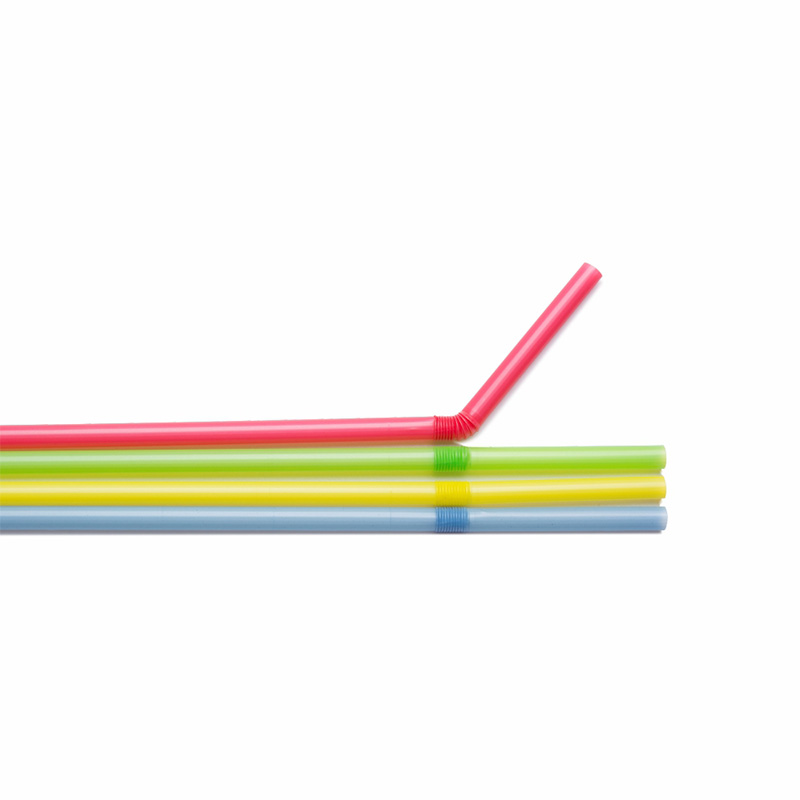Temperature control
PLA materials have a low heat deformation temperature, usually between 55℃ and 60℃. Long-term exposure to high temperature may cause the straws to soften, deform, stick, or even completely lose their structural strength. During transportation, the ambient temperature should be strictly controlled, especially in summer or during cross-regional transportation, to avoid excessive temperatures in the vehicle compartment or container.
The transport vehicle should have ventilation and cooling functions, preferably closed trucks or containers with temperature control systems. The compartment temperature should be tested before loading to ensure that it is below 35℃. PLA straws must not be mixed with high-temperature and heat-generating goods (such as electrical appliances and metal parts).
Humidity control
PLA straws are also sensitive to humidity. Long-term exposure to high humidity may cause the material to absorb moisture and expand, physical properties to decrease, and even affect the stability of later biodegradation behavior. To avoid moisture, the entire transportation process must be waterproof and moisture-proof.
The outer packaging should use packaging materials with good moisture-proof properties, such as aluminum film composite bags, coated cartons, etc. Before transportation, it should be confirmed that the straw packaging is intact and undamaged, and the packaging material should be prevented from being scratched or cracked under pressure during loading and unloading. The transport vehicle should avoid long-term exposure to rainy or humid weather. If necessary, moisture-proof film can be used to reinforce the overall cargo stacking.
UV protection
PLA materials may degrade under long-term ultraviolet radiation, which is manifested in yellowing of the product and decreased strength. Direct sunlight should be avoided during transportation, especially in long-distance road transportation or temporary transit.
Dark, light-proof outer packaging is preferred, and light-proofing should be used in the carriage. During outdoor loading and unloading or temporary stacking, sun-proof tarpaulins or sunshade cloths should be added to reduce direct exposure time and protect the physical properties of the product from being damaged by ultraviolet rays.

Stacking and load-bearing restrictions
PLA straws have weaker compression resistance than traditional PP straws, especially under high temperature or high humidity conditions, which makes them more prone to indentation, bending or breaking. Therefore, the stacking height and single box load should be strictly controlled during transportation.
Pallet stacking should follow the principle of "light on top, heavy on bottom, and uniform force". It is generally recommended to stack no more than 5 layers of standard boxes, and a cushioning layer (such as corrugated board or EPE pad) should be added to the top of each box to avoid direct compression. It is recommended to use anti-skid pads or paper corner guards to reinforce the pallets to prevent the goods from tilting and sliding, causing deformation or damage to the outer box.
Anti-vibration and fixation
During long-distance transportation, bumps and vibrations are inevitable. PLA straws are light in texture. If the packaging is not firm, they are easy to shake in the carriage, causing damage, scratches inside the straws or rupture of the packaging box.
Each pallet of goods should be fixed as a whole with stretch film or packing tape to prevent the goods from shifting. It is recommended to use inflatable cushions, foam boards and other shockproof materials to fill the gaps inside the cargo box to improve overall stability. The transportation route should try to avoid rugged and bumpy sections and choose high-speed or smooth roads.

 English
English 中文简体
中文简体


















